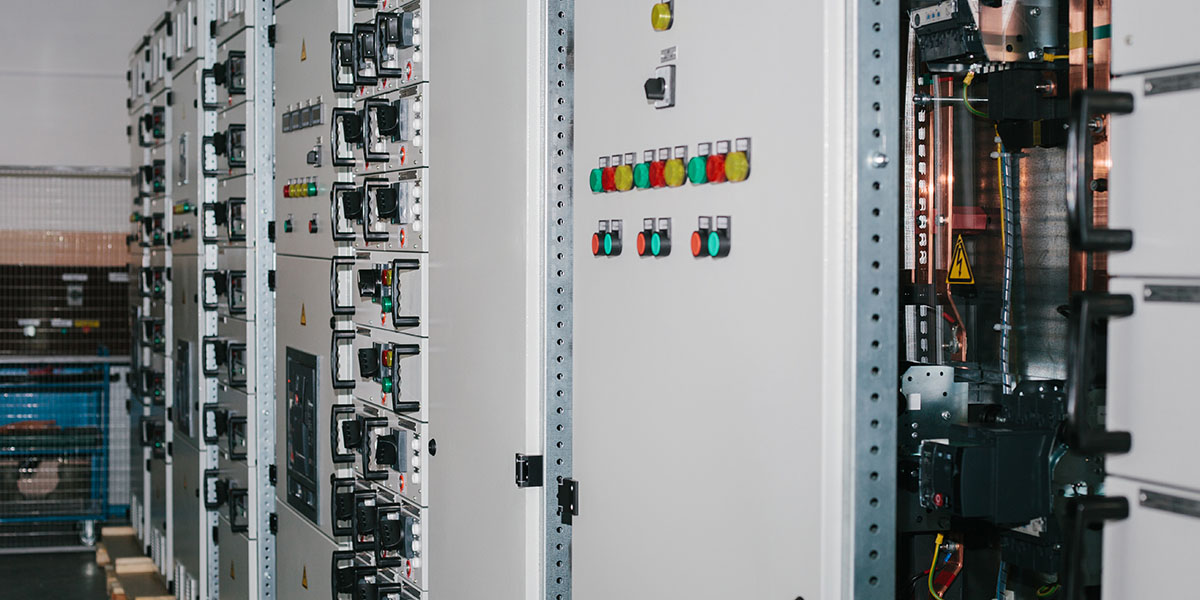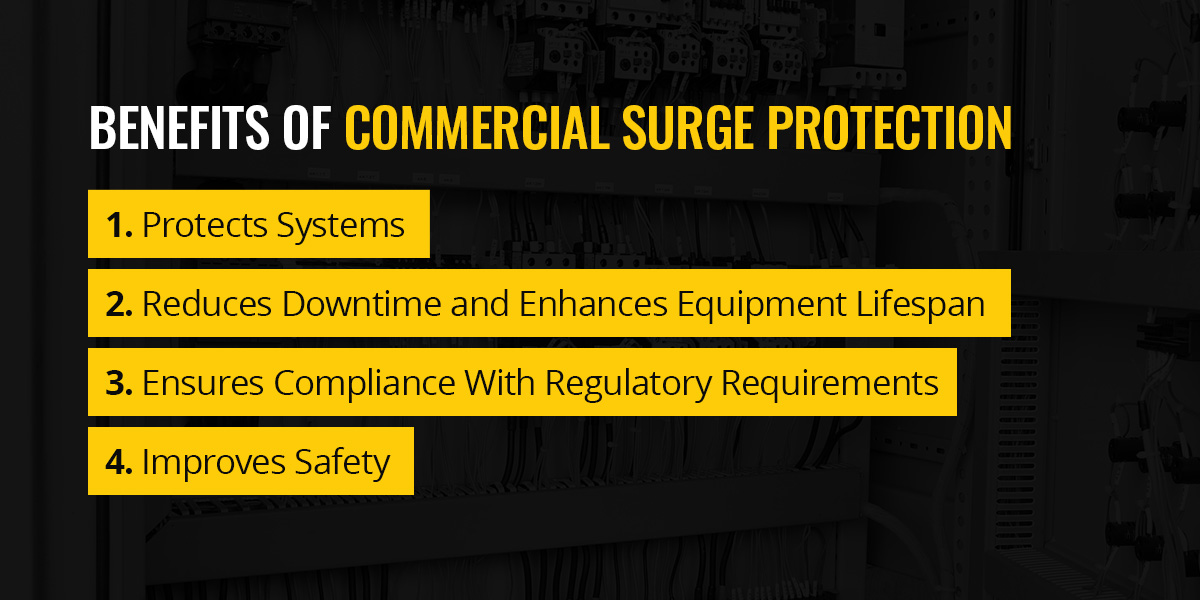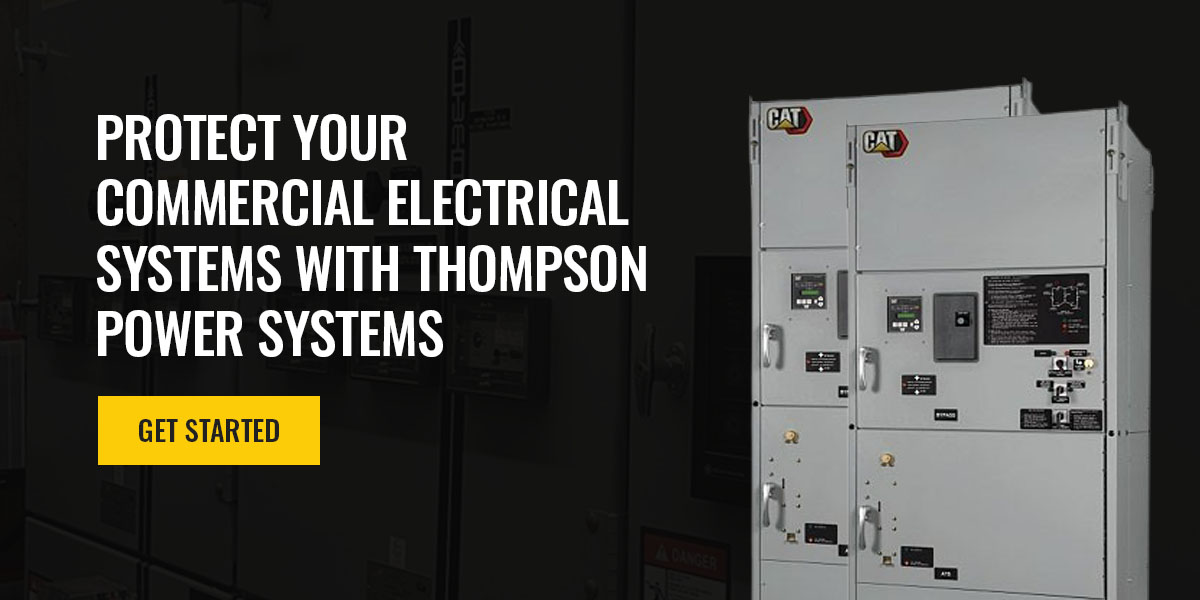

Power reliability is a business priority. Whether you’re overseeing new construction, managing upgrades or maintaining high-performance systems, a power surge can disrupt operations or damage equipment.
Surge protection contributes to the long-term health of your electrical infrastructure. It keeps systems stable, downtime minimal and investments protected.
Explore what surge protection is, why it’s beneficial and commercial power safety solutions.
A surge suppressor, or a surge protective device (SPD), is a mechanism that detects and diverts excess voltage from power spikes away from critical equipment. These surges can originate from heating, ventilation and air conditioning (HVAC) systems cycling, lightning strikes or grid switching events.
Key features of a voltage surge suppressor include:
The National Electrical Code (NEC) defines SPDs by three classifications — Type 1, Type 2 and Type 3. Each serves a distinct purpose with a facility’s power infrastructure. Here’s a look at these types:
While the NEC classification focuses on function and installation location, form factors refer to how these devices are built and mounted. Commercial SPDs can be:
Surge protection offers various operational and financial benefits. Here are the perks of installing these devices.

Most commercial buildings depend on interconnected power systems. These systems operate on calibrated electronics, which are vulnerable to voltage spikes, even those that last only a few seconds.
Surge protection helps shield these systems from transient overvoltages, preventing damage and wear that can accumulate from repeated exposure. By intercepting voltage spikes before they reach sensitive components, surge protective devices relieve the stress before it causes failure. This provides building owners with stability in their daily operations.
A surge-related outage can disrupt workflows, pause production, compromise tenant satisfaction or delay critical building operations. By integrating protective devices at key points in the power infrastructure, facilities can reduce failures that may impact multiple systems. When equipment needs service, root causes are easier to diagnose when transient damage isn’t the source of the problem. This leads to more consistent uptime, better operational planning and reliability in a facility’s power network.
Commercial surge protection allows systems to operate within their designed voltage range, protecting the investment in capital equipment. Instead of replacing assets sooner than expected, facilities can extend their useful life and defer capital expenditure.
Various industries have specific electrical protection standards to meet building codes, insurance requirements or operational certifications.
Additionally, the NEC provides guidance on where and how SPDs should be used in commercial facilities. In some settings, surge protection devices must be integrated into the power design to pass inspection.
By adopting a surge protection strategy that aligns with these codes and industry standards, facility managers can avoid compliance issues, reduce liability and ensure their infrastructure remains audit-ready.
Electrical arcs, insulation breakdown, overheating or system misfires carry potential safety hazards for employees and tenants.
Surge protection devices reduce these risks by controlling the voltage within a building’s power system. When integrated properly, they help maintain consistent system behavior, preventing anomalies before they escalate.
In commercial buildings, surge protection should be applied with intention and tailored and designed for unique operational needs.
Below are solutions that support reliability, safety and asset protection:

Thompson Power Systems has over 65 years of experience helping businesses protect their operations from power disturbances. We design and deliver solutions that fit your needs, from surge protection in control panels and integrated solutions across generators to ATS units and energy storage systems.
When you partner with us, you get expertise and local support. We’ll help you choose the right surge protection strategy for your facility so you can protect your staff, systems and bottom line.
Contact us today to get started.